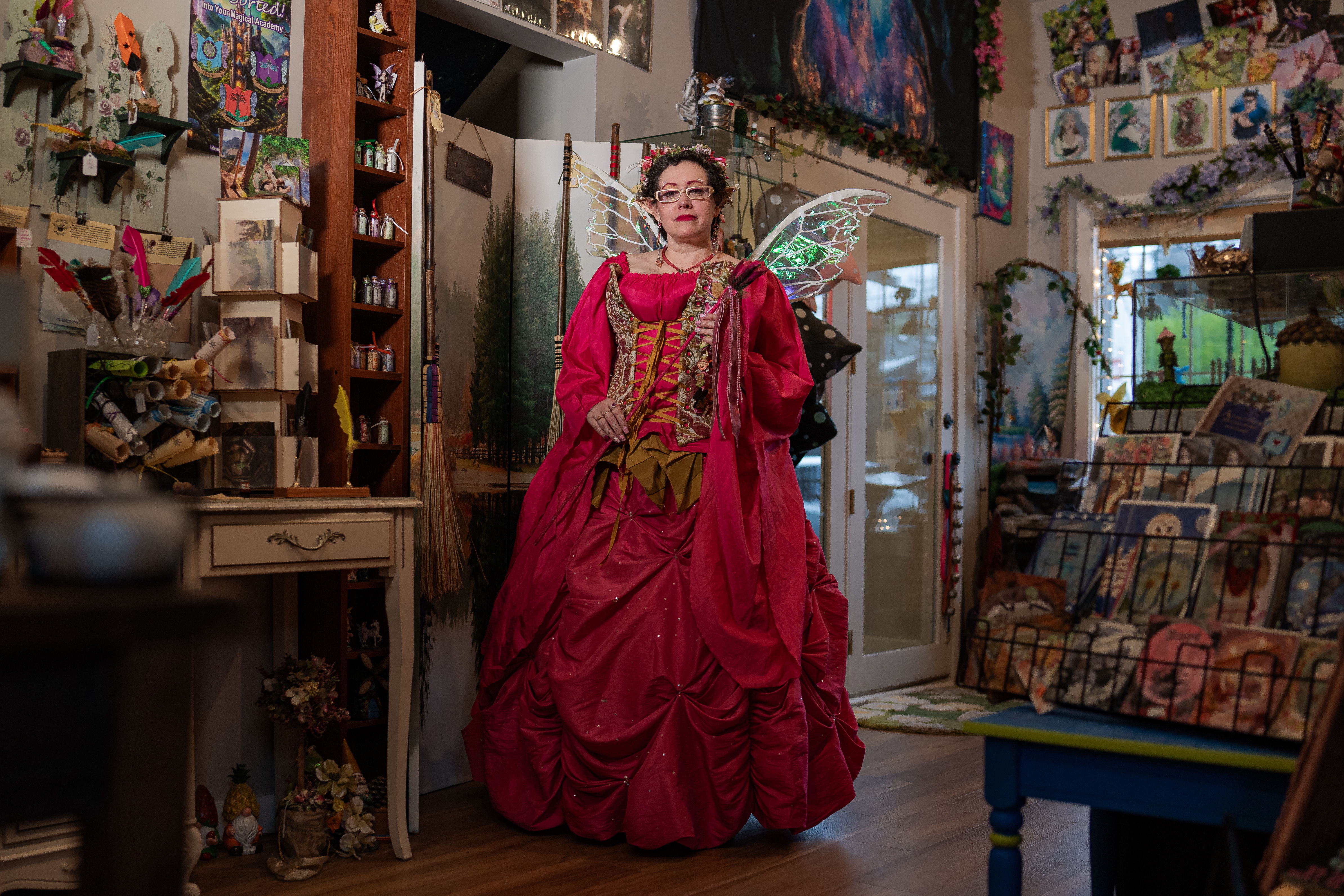Midcentury Modern Revival
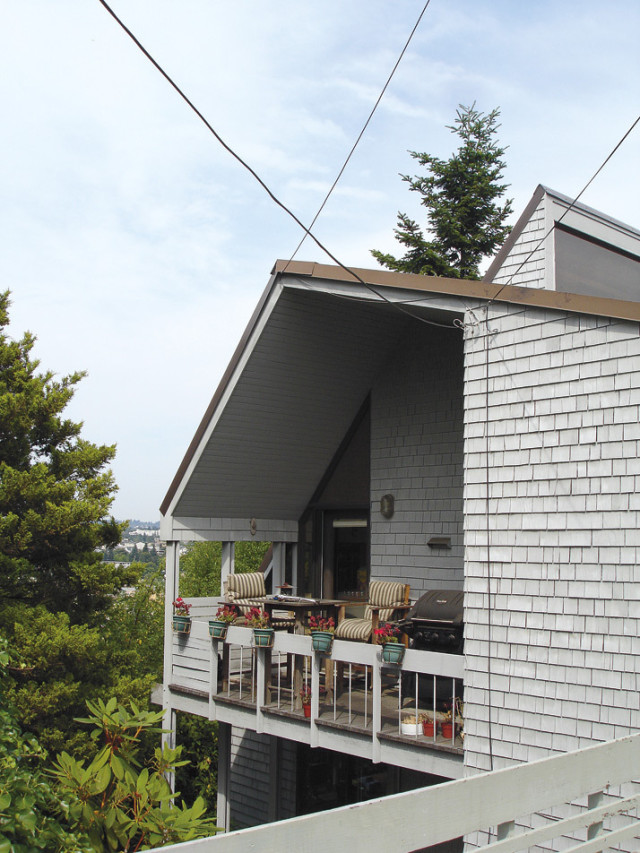
Image: Will Austin
"WHEN I WALKED INSIDE, I HAD A VISCERAL response, and I knew this was it. The soaring ceiling, the warmth of the wood, the view, and the overall openness really resonated. It was just plain cool.”
That’s Gavin Kelly, describing the first time he saw the Queen Anne home where he lives with his wife, Jenny, and their two children. The Kellys had moved to Seattle from Sydney, Australia, in 1998, and lived in a rented apartment nearby, then started looking for a house in that neighborhood. Given the historic and gracious old homes all around them, the young couple assumed they would buy a traditional Craftsman or Tudor. But one afternoon, Gavin was shown the Northwest contemporary house perched on the north side of the hill.
Jenny checked it out the following day. “It needed a lot of work, but I was very excited, too. There was a sense of serenity, a peaceful calm that just made me want to stay longer.”
Not everyone saw the appeal. Jenny says her real estate agent thought the idiosyncratic layout—the main entryway, kitchen, and dining area are on the loftlike upper level, with a railing overlooking the separate, lower-level rec room—might not be suitable for a growing family. The agent reluctantly agreed to submit a lowball offer, and it was accepted.
What the happy new homeowners didn’t know—and presumably their agent didn’t either—was that the house was designed in 1966 by prominent Northwest architect Paul Hayden Kirk. He designed many public buildings and private residences in the Seattle area between 1939 and 1979, and is credited with helping develop a regionally distinct version of modern architecture. He used local materials like cedar and fir and grouped windows to form large expanses of glass. He eschewed the ornamentation and gabled roofs of traditional homes and favored carports instead of garages; open, casual interiors over formal living and dining rooms.
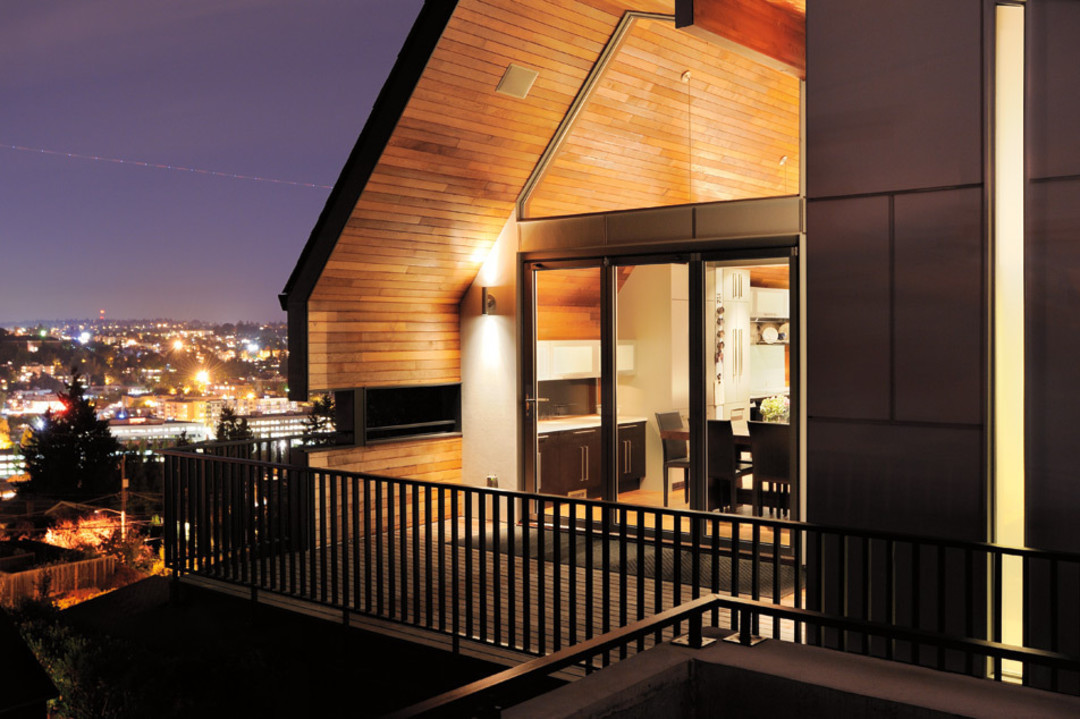
Before and After To lighten up the original design, architect Lane Williams added windows and glass doors to the home’s west side.
Image: Will Austin
Kirk’s “big idea” at the Queen Anne house was a roof that merged with its north- and south-side walls as a single, folded plane. He created continuity by using cedar shingles on the exterior roof and siding and cedar paneling on its interior. Rooms on the upper level—dining and living rooms—are small by today’s standards, but have vaulted ceilings that soar to 14 feet at their highest point, adding a sense of spaciousness (a major selling point for the Kellys, given Gavin’s six-foot-seven-inch stature).
Before moving in, the Kellys refinished the floors and tore out the old carpeting, replacing it only in the master bedroom. They also remodeled the bathrooms, got rid of an old cedar hot tub, and replaced the wooden lower deck with a bigger, more functional two-level Trex deck with cedar benches and railings.
But major changes didn’t begin until 2008—nine years after they moved in. By then, Gavin was running his own design firm, and Jenny, a hospitality industry vet, had quit working to raise their two children (now 10 and four). They started their search for architects on Queen Anne, and soon met Lane Williams of Coop 15, who impressed them with his aesthetic of clean lines but warm-feeling interiors.
While another architect might balk at being asked to remodel a house by such a highly regarded predecessor—or at being asked to retain a lot of the original design, Williams welcomed the challenge. “It wasn’t difficult because it was [an architect] I admired,” he says. “There was plenty of room for invention within the original idea.” He knew he wanted to preserve the roof-to-wall plane and choose materials consistent with the original design, but he also saw room for improvement. The cedar paneling that wrapped around the inside of the walls and ceiling sucked light out of the space, and the Kellys wanted to add a third bedroom without making the house feel too large.
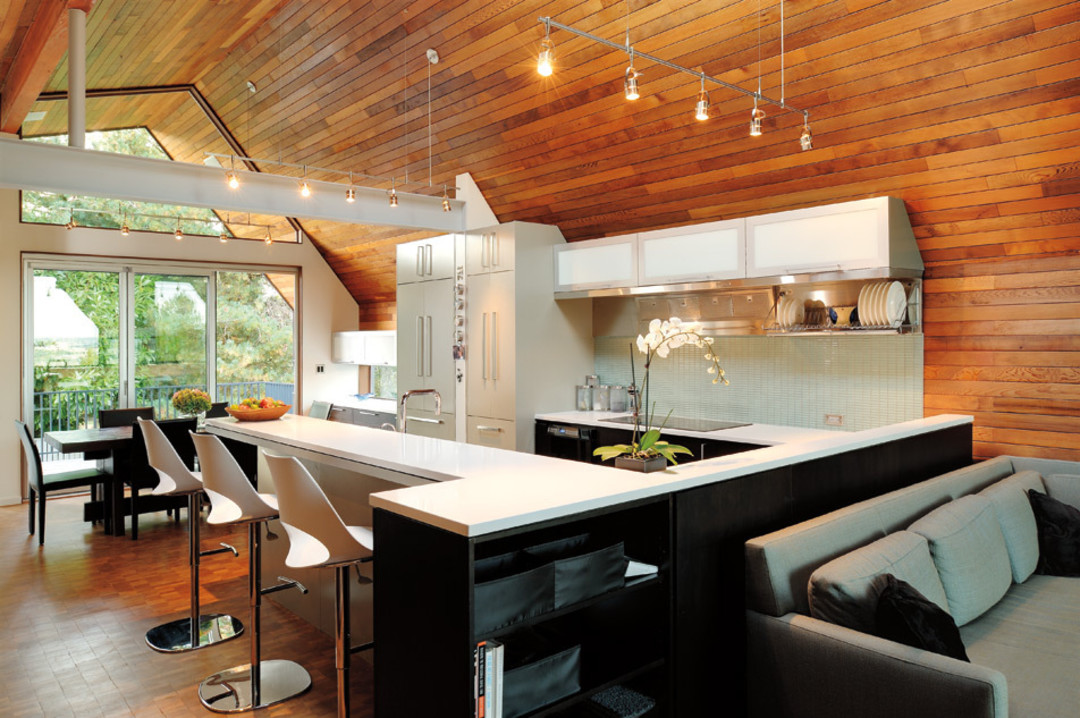
Image: Will Austin
Williams’s redesign pushed the footprint about 10 feet to the west, increasing the kitchen size on the upper level from 80 to 130 square feet and adding a new dining area (the old one was converted to a family room). He reconfigured the entry from the carport to add a mudroom and powder room, and opened up the stairway to the lower level. To lighten things up, he added white-painted drywall to the cedar paneling along the interior partition walls, added more windows and slide-fold glass doors to the west end of the house, and refaced the original brick fireplace with off-white Milestone, a mix of cement and acrylic.
In contrast to the high ceilings on both levels, the old stairway was closed in with a single landing at its midpoint. The redesign increased the stairwell’s footprint into a U-shape with two landings and a large opening between floors. Added bonus: Gavin no longer had to duck every time he went down the stairs, Williams says.
On the lower level, the large space was reconfigured to create a more defined living area, a bedroom for each child, and a new children’s bathroom; the original lower-level bedroom is now a flexible media room that can be closed off with huge chalkboard-covered sliding doors to become a guest suite.
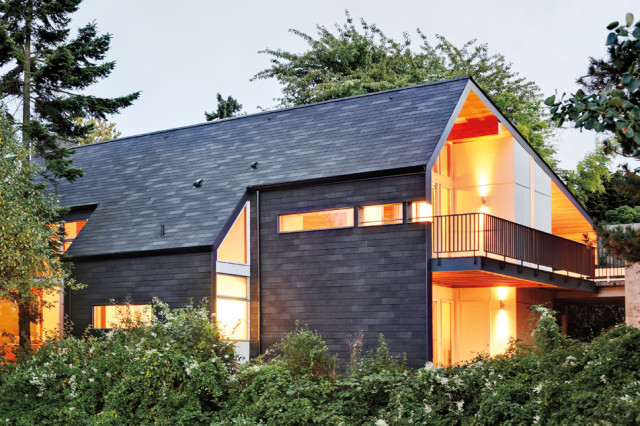
From the Outside In The single, folded plane of the roof and walls unifies the open, lofty living areas.
Image: Will Austin
The kitchen updates include quartz countertops, new appliances, and a glass tile backsplash, while single-pane windows and doors were replaced throughout the house with more energy-efficient ones. “We were able to do things the original architect didn’t, but probably would have, given the same resources,” Williams notes, listing improvements such as low-voltage track lighting, LED lights, a high-efficiency furnace, ipe decking, and sound-insulating gypsum wallboard. Though the house is bigger, the Kellys’ power bills have shrunk.
The home still has the look and feel of Kirk’s design, because Williams kept details such as the wall of windows in the two-story living room and end-grain fir floors on the upper level.
And as for that funny layout the real estate agent so disparaged? Jenny says she loves how the open loft overlooking the lower level keeps her connected to what the children are doing below, noting that her son’s and daughter’s rooms are both downstairs, and with the separate media and living rooms, two different age groups can play in the same space happily. With a few modern tweaks, Kirk’s upside-down layout proved family friendly after all.
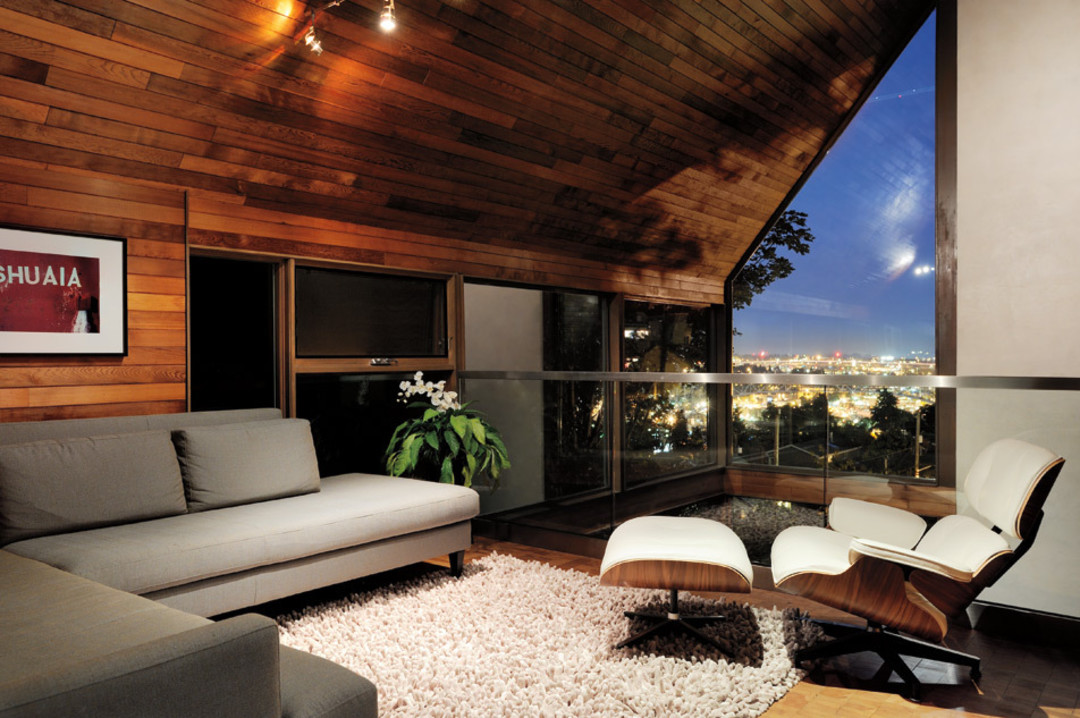
Image: Will Austin,Will Austin

